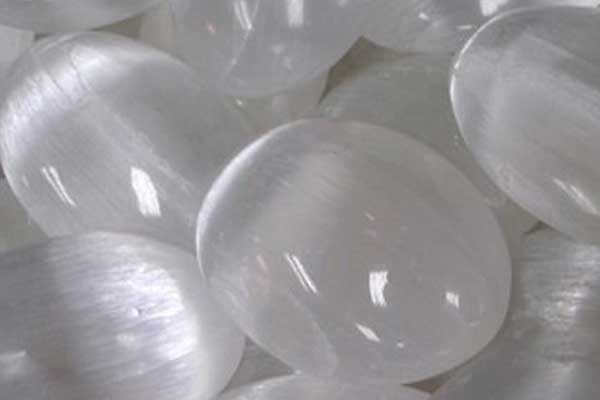Home » PP Copolymer

What Is Polypropylene PP Copolymer
Polypropylene copolymer, refered to as PP copolymer(PPC), is a propylene monomer copolymers with ethylene monomers. According to the distribution of ethylene monomer on the molecular chain, PP copolymer can be divided into two types, random polypropylene copolymer(PPR) and block copolymer polypropylene(PPB). PP copolymer incorporating a small amount of ethylene monomer during polymerization have higher impact strength. The copolymerized PP material has lower thermal distortion temperature, low transparency, low gloss, low rigidity, but has stronger impact strength. Many commercial PP materials are PPR with 1-4% ethylene addition or PPB with higher specific ethylene content.
Different Grades of PP Copolymer We can Supply
The models and parameters listed below are for reference only. You can directly send an inquiry to tell us the brand and model you need, or tell us more about your requirements, such as, performance, applications, etc. We will reply you based on your needs in time.
| Grades | MFR(g/10min) | Tensile Strength at yield(MPa) | Notched lzod impact strength(23℃, KJ/㎡) | Flexural Modulus(GPa) | Brand |
| B4902 | 2.2 | 26.7 | 9.4 | 0.9 | Yanshan |
| B4908 | 8.9 | 27.5 | 4.9 | 1.1 | Yanshan |
| K4818 | 22.4 | 31.7 | 3.4 | 1.1 | Yanshan |
| K4912 | 12.3 | 30.8 | 3.4 | 1.0 | Yanshan/SECCO/Maoming |
| B4808 | 11.1 | 30.0 | 4.0 | 1.2 | Yanshan |
| QPT91N | 33 | 27 | 6 | 1.05 | Qilu |
| QTP93N | 12 | 26 | 6 | / | Qilu |
| HT9025N | 25 | 23 | 55 | 0.8 | Maoming |
| PPR-MT18-S | 18 | 32.7 | / | 1.29 | Maoming |
| PPR-MT40-S | 38 | 26.4 | / | 0.99 | Maoming |
| GM800E | 8.0 | 26 | 35 | 0.95 | Shanghai |
| GM1600E | 16 | 25.5 | 25 | 0.95 | Shanghai |
| GM160E | 1.6 | 28.5 | 70 | 0.85 | Shanghai |
| GM750E | 7.5 | 26.5 | 35 | 0.85 | Shanghai |
| M250E | 2.5 | 27 | 40 | 0.90 | Shanghai |
| Item | Type | Brand |
| PP Copolymer | PPB-M02 | Funde, Sinopec |
| PPB-M09 | Sinopec | |
| M30RH | Sinopec | |
| K8003 | Sinopec,KunLun,BaoFeng,ShenHua,SK,ZPC,HengLi | |
| J340 | Sinopec | |
| 1215C | Sinopec | |
| EPS30R | KunLun |
Would Like The Quotation
Leave more about your requirements, such as, brands, models, quantity, package, country, etc.
What Are Types of PP Copolymer
- Random PP Copolymer PPR
- Block Copolymer Polypropylene PPB
It is obtained by the copolymerization of propylene monomer and a small amount of ethylene monomer under the action of heat, pressure and catalyst. Ethylene monomers are randomly distributed into long chains of propylene. The random addition of ethylene reduces the crystallinity and melting point of the polymer, and improves the performance of the material in terms of impact, long-term hydrostatic pressure resistance, long-term thermal oxygen aging, and pipe processing and molding. PPR molecular chain structure, ethylene monomer content and other indicators have a direct impact on the long-term thermal stability, mechanical properties and processing properties of the material. The more random the distribution of ethylene monomer in the propylene molecular chain, the more significant the change of polypropylene properties.
Advantages of PPR
Good comprehensive performance, high strength, high rigidity, good heat resistance, good dimensional stability, excellent low temperature toughness, good flexibility, good transparency and good gloss.
Application
PPR is mainly used in applications requiring high transparency. It is used to extrude blown-grade, film-grade and injection molding grade polypropylene.
Used in the manufacture of pipes, shrink films, drip bottles, highly transparent containers, transparent household products, disposable syringes and wrapping paper films.
With high ethylene content. However, due to the high probability of connecting two ethylene monomers and three monomers in PPB, the ethylene monomer only exists in the block phase, which doesn’t reduce the regularity of PPH. Therefore, the purpose of improving the performance of melting point, long-term hydrostatic pressure resistance, long-term heat-resistant oxygen aging and pipe processing and forming can’t be achieved.
Advantages
Better impact resistance, a certain degree of rigidity improves impact strength.
Applications
PP Copolymers with higher ethylene content(PPB) are widely used as special sealing layers for coextruded film construction due to lower welding onset temperature.
Manufacturing of bumpers, strollers, sports equipment, luggage, paint buckets, battery boxes, thin-walled products.
Characteristics of Polypropylene Copolymer
Random copolymer polypropylene is transparent. The transparency is better than that of homopolymer polypropylene. And the particles are slightly brighter than that of PPH.
PPR has good impact resistance, creep resistance and high transparency. The impact resistance of PPB is god, but the creep resistance is slightly worse.
In general, PPR is more flexible and less rigid than PPH. The molecular weight of the pp copolymer material doesn’t have as much effect on stiffness as the PP homonpolymer.
Chemical resistance. Random PP copolymer are resistant to acids, bases, alcohols, low-boilding hydrocarbon solvents and many organic chemicals has a strong resistance. At room temperature, PP copolymers are substantially insoluble in most organic solvents. It doesn’t suffer from environmental stress rupture damage like many other polymers when exposed to soap, soap lye, aqueous agents and alcohols.
Barrier properties. Copolymer and homopolymer PP both have low water vapor permeability. But the property can be improved by orientation.
Why Choose Us
- A trusted Polypropylene PP agent in China. Complete models, original authentic guaranteed.
- Adequate inventory. Professional warehouse management.
- Quality assurance. Strict EX-warehouse quality inspection. On the premise of ensuring quality, it will be delivered to you as soon as possible.
- Affordable price and timely delivery. Inquiry us now for PP Copolymer price.
- Email: sales@chemategroup.com
- Tel: 0086-371-60921621
- Whatsapp: +86 18624832876
- Wechat: +86 18624832876
- ADD: NO.80 PUHUI ROAD,ZHENGZHOU CITY, HENAN PROVINCE, CHINA
